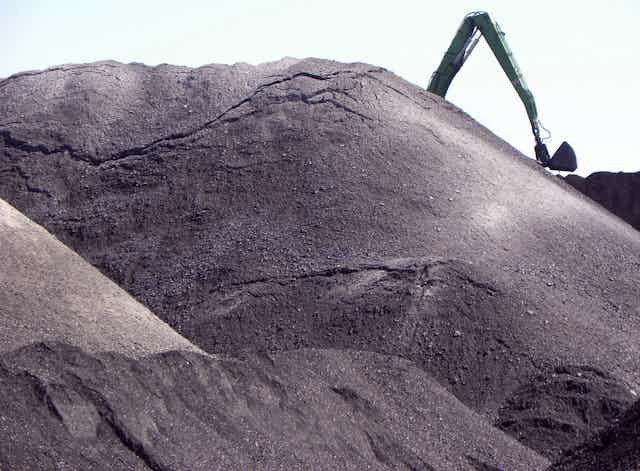Is coal in trouble in Australia? The Bureau of Resource and Energy Economics recently revealed A$150B-worth of mining and energy projects have been mothballed in the last 12 months. The media is reporting coal is on the ropes. And earlier this month Xstrata decided to cease work on a new export terminal, saying:
This decision has been made as a result of the poor current market conditions in the Australian coal industry … and concerns about the industry’s medium-term outlook.
Structure of the industry
To understand how the coal industry in Australia is faring - and to project its future - we need to look at the industry’s structure. Understanding that can help us assess whether decisions like Xstrata’s are indicative of the industry in general.
The Australian coal industry is dominated by large companies with diverse and global interests. Characteristics of the industry include:
-
multinational ownership. Coal mining companies are typically multinational; for example, Glencore-Xstrata (the two companies merged in May 2013) is listed on the London and Hong Kong Stock markets. Further, many of the companies have regional subsidiaries
multinational mining interests. BHP (the largest company in the Australian black coal mining sector) has coal interests in South Africa, Australia and South America servicing both domestic and international markets
multiple resource interests: Rio Tinto mines uranium, diamonds, aluminium and copper as well as coal
various coal types: coal itself has many forms and grades. For example, (black) steaming/thermal coal is used for power generation whereas (black) coking coal is used for blast furnaces
The sector has a high degree of international exposure and is characterised by a significant amount of competition, both within and between companies. There is also a high degree of product differentiation. Combined, these factors make for a very resilient industry.
Coal’s importance to Australia
Coal’s contribution to the Australian economy has been the subject of much discussion. It is a common belief that the mining sector is running faster than the rest of the economy. Coal has been a big factor in this extraordinary performance which stems, in part, from the unprecedented demand by China and India.
We can see coal’s importance to the economy when we consider:
thermal coal was the third largest commodity export by value in 2011-12
the coal economy is estimated to make up 4.2% of gross value added (worth almost $60 billion) in 2011-12
for every job created in coal mining, 3.7 jobs are created nationally in the Australian economy, making up a direct and indirect workforce of more than 180,000 people in 2011-12
The Australian coal industry has played a critical role in growing Australia’s prosperity. This is noteworthy, given the challenges the industry has experienced from natural disasters, the economic downturn, industrial disputes and government policies such as the mineral resources rent tax.
Future of the industry
Natural disasters, industrial disputes and government policy will all influence the long-term performance of the Australian coal sector.
A particularly critical question facing the industry is whether the Australian Government will move to further impede coal production in the name of global warming. This move has been foreshadowed by organisations like Carbon Tracker who note that we can only burn a small percentage of our coal reserves if we’re to restrict the earth to less than two degrees of warming.
While restricting mining is a possible scenario, it is not a probable one given the economic and political risks involved. Previous steps towards a binding, mandatory, enforceable world-wide environmental agreements have proved effectively fruitless, making this outcome extremely unlikely. Further, if coal production is seriously impeded there will be significant economic fall-out.
Many critics will argue that the costs of global warming are too great to ignore. But policy makers (and Australian society in general) should remember that the models forecasting the impacts of global warming are governed by the same limitations as Treasury modelling; that is, human conceptualisation.
According to a recent report, 1199 new coal-powered energy plants have been proposed globally - there is still plenty of demand for coal worldwide. And in Australia, coal plays an important role in generating base load electricity, a necessary ingredient in every aspect of our lives.
Demand for coal is likely to increase. The sluggish economic conditions brought on by the global financial crisis will probably mean this demand is likely to grow less than it has done in recent times. But coal will still be a very important part of the global economy and therefore Australia’s prosperity.

